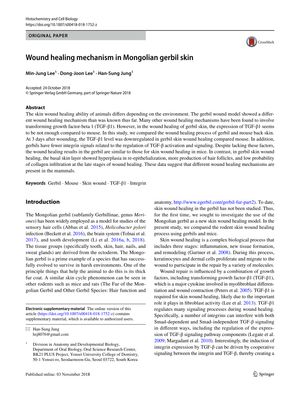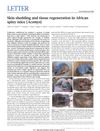Wound Healing Mechanism in Mongolian Gerbil Skin
November 2018
in “
Histochemistry and Cell Biology
”
TGF-β1 TGF-β2 TGF-β3 collagen infiltration re-epithelialization hyperplasia hair follicle production collagen deposition RNA sequencing RT-PCR Itga3 Itga5 Acta2 Smad3 CTGF keratin 14 transforming growth factor beta 1 transforming growth factor beta 2 transforming growth factor beta 3 collagen skin healing skin thickening hair growth gene sequencing gene expression analysis integrin alpha 3 integrin alpha 5 alpha smooth muscle actin connective tissue growth factor keratin

TLDR Mongolian gerbils heal wounds differently than mice, with unique protein levels and gene expression that affect skin repair.
The study compared the wound healing process in Mongolian gerbils to that in mice, revealing that gerbils have a distinct healing mechanism despite exhibiting slightly slower initial wound closure. Gerbils showed lower levels of TGF-β1 and fewer integrin signals but compensated with higher levels of TGF-β2 and TGF-β3, which may inhibit collagen infiltration and promote re-epithelialization. The study observed hyperplasia in the basal layer, increased hair follicle production, and less collagen deposition in gerbil wounds. RNA sequencing and RT-PCR analyses identified upregulation of genes related to wound healing, including Itga3, Itga5, Acta2, Smad3, and CTGF, but not Smad2, and an increase in keratin 14 expression. The study involved a minimum of five gerbils and mice for each time point for cell proliferation counts and 10 samples for RT-PCR analysis, suggesting that the findings are based on a moderate number of subjects and may provide insights into mammalian skin repair mechanisms.

